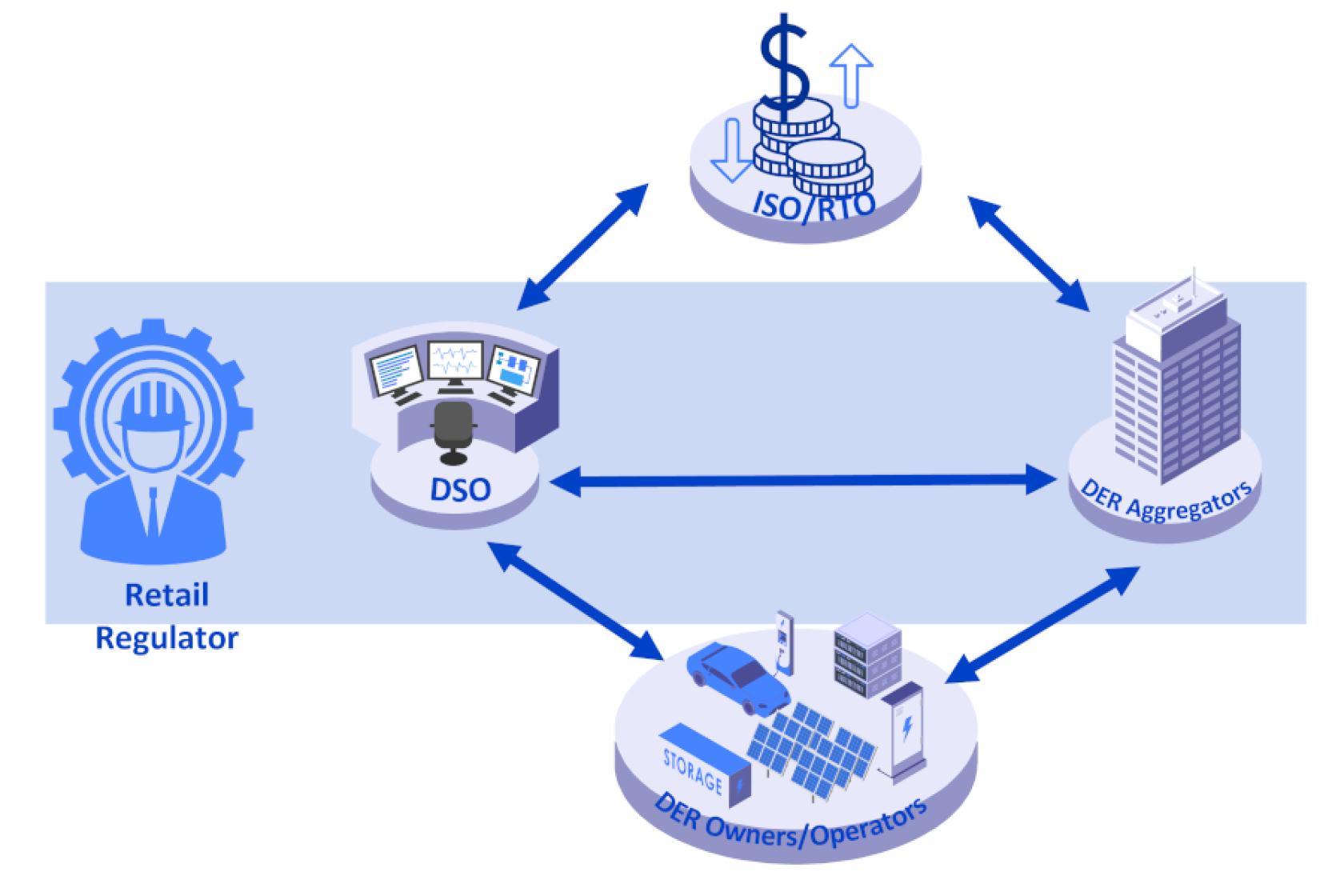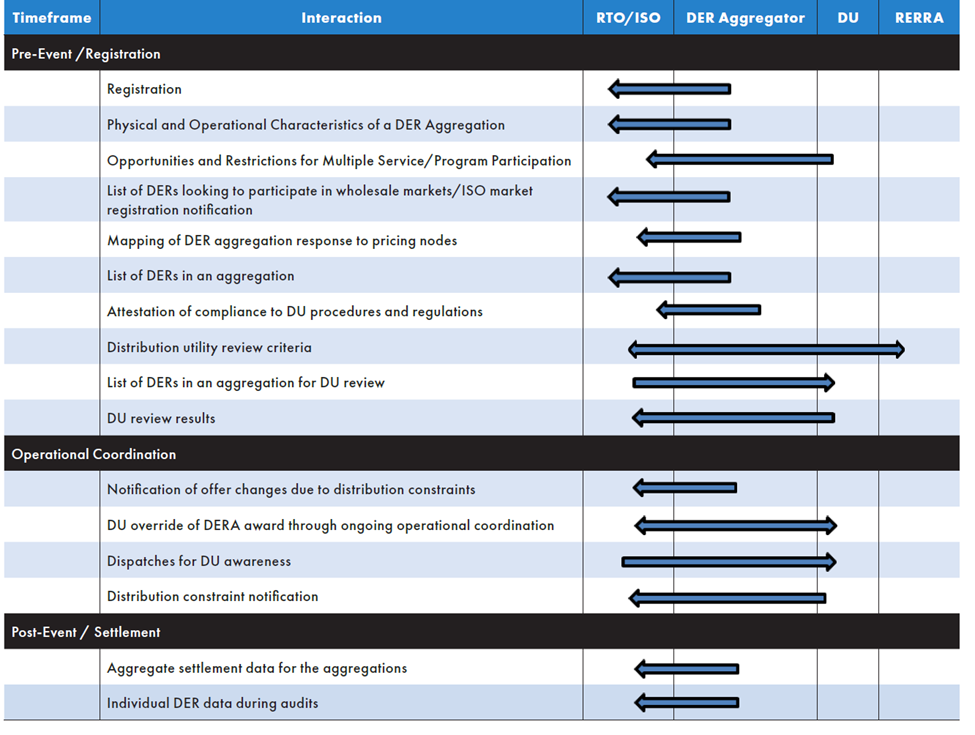The workstream covered topics related to coordination from ISO/RTO, distribution utility, transmission utility, DER aggregator, and electric retail regulatory authority perspectives. This included communication and process needs during situations that require coordination across multiple entities. A major driver for coordination is to reduce the cost and complexity of providing grid services from aggregations of DER while maintaining reliable system operation across both transmission and distribution systems. The motivation for coordination may be different for each stakeholder involved in a coordination framework. For example, ISO/RTOs may be motivated to coordinate to improve utilization or access of DER for wholesale market services. For distribution utilities, the motivation could be to ensure reliable and safe operation of the distribution grid. For aggregators, there could be motivation to avoid performance penalties or other reasons.

Reference Stakeholders and Interfaces.
The workstream provided comprehensive assessment of the coordination frameworks and parameters between stakeholders as specified in FERC Order 2222. Some of these characteristics are explicitly mentioned in the Order while others are implied but necessary or useful to be performed to meet other direct requirements. The coordination parameters or order requirements may be enforced at various timeframes, spanning from pre-event/registration through post-event/settlement following the provision of the service. Consequently, this workstream considered the coordination in three broad categories: before the event (pre-event), during the event (operational), and after the event (post-event).

Reference Time Frames.

Coordination interactions mapped to reference stakeholders across different timeframes.
Specifically, each coordination parameter or requirement was expanded on with the timeframe of information exchange, entities involved in the information exchange, and the exchanged information. Relevant commentary on the requirements was also provided.
Physical and Operational Characteristics of a DER Aggregation
IV.F Information Data Requirements
Clause 236
We require each RTO/ISO to revise its tariff to (1) include any requirements for distributed energy resource aggregators that establish the information and data that a distributed energy resource aggregator must provide about the physical and operational characteristics of its aggregation
Clause 237
We require the RTOs/ISOs to revise their tariffs to establish any necessary physical parameters that distributed energy resource aggregators must submit as part of their registration process only to the extent these parameters are not already represented in general registration requirements or bidding parameters applicable to distributed energy resource aggregation
Each coordination parameter was expanded on with the associated text from the Order, applicable timeframe, interacting parties, and exchanged information. Relevant commentary was also provided.
Applicable Timeframe: Pre-Event, Registration
Parties Interacting: DERA to ISO/RTO
Information Exchanged: Physical and operational characteristics of an aggregation
Key Takeaways
- For the coordination frameworks, the roles of stakeholders may vary based on the regulatory, technical, and process decisions made in each jurisdiction. The benefits and limitations of each framework should be well understood by the stakeholders.